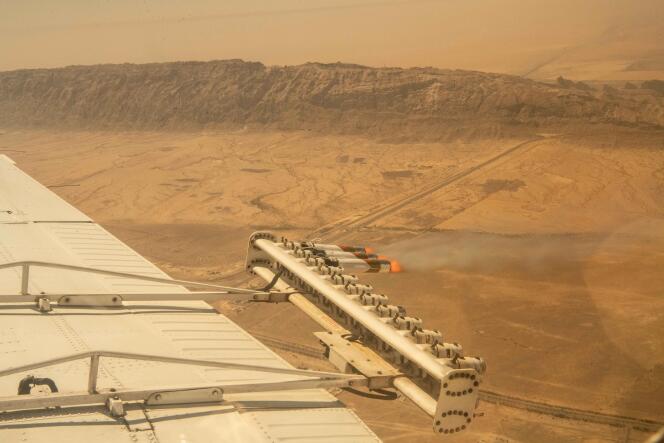
Artificially altering the weather, causing rain to fall, and thereby meeting the needs of its population and the economy: This is the stated goal of the Chinese Meteorological Agency, which launched its first national plan to this end in late 2019. Alarm bells sounded for the international press, but not for the Chinese, as "ren gong zeng yu," or artificially boosting rainfall, was already a common practice in the country.
The technique used involves seeding clouds to induce precipitation by injecting particles of salt or silver iodide into the clouds, via airplane, rocket, or ground-based smoke-diffusing devices. Scientists have been studying weather modification devices for over a century, and China is now positioning itself as the global leader in this practice. Historically, water resources have been unevenly distributed across the country – the north of the country has less than 20% of them. However, due to climate change, even China's southern provinces greatly suffered from the 2022 drought.
Every Chinese city has a local cloud-seeding plan, which is implemented by officials and researchers, in cooperation with the military. Between June and November 2022, the seeding carried out by 241 airplane flights and 15,000 rocket launches reportedly caused "8.56 billion metric tons of additional rainfall" in the Yangtze River basin, according to the People's Daily.
'Surgical intervention'
But China is far from being the only country wanting to exploit clouds to its advantage. The United States, the United Arab Emirates, Russia, Saudi Arabia, South Africa, Thailand, and Mexico are just some of the countries developing the method. Several countries have programs targeting various objectives: reducing the impact of drought on agricultural activities, securing drinking water supply, fighting forest fires and conserving and restoring ecosystems. In France, cloud seeding is carried out in about 20 departments by l’Association Nationale d’Etude et de Lutte contre les Fléaux Atmosphériques (the National Association for the Study and Fight Against Atmospheric Disasters) and the company cloud seeding company Selerys. The goal is to prevent potential damage caused by hail falling on agricultural fields in the spring and summer.
The Earth's atmosphere contains 13,000 cubic kilometers of water in vapor form. This sizable reserve renews itself eight or nine times a year thanks to natural phenomena that constitute the water cycle: the evaporation of soil and ocean, plant transpiration and precipitation. To form rain and snow, the abundant presence of condensation nuclei in the atmosphere is crucial. Produced by volcanoes, oceans, or soil and carried by the wind, these tiny particles allow water molecules to become droplets, and supercooled water – which remains liquid despite temperatures below freezing point – to turn into ice. These physical processes have inspired the cloud seeding technique.
You have 58.86% of this article left to read. The rest is for subscribers only.